- Home
- High Commission
-
Consular
- Passport & Misc. Consular Services
- Voting Right to NRIs
-
Online Link for all Consular Services
- Online registration of NRIs in Malawi
- Fresh/Re-Issue of Passport
- Apply online for Birth-registration
- Police Clearance Certificate (PCC)
- Declaration of Renunciation of Indian Citizenship
- Surrender of Indian Passport (Renunciation Certificate)
- Emergency Certificate
- Identity Certificate
- Apply online for OCI cards
- Apply for e-Visa
- Apply online for Indian Visa
- Grievance registration on MADAD
- Passport applications
- Status of Passport, PCC and OCI applications
- Launch of e-Clearance for Afterlife Remains (eCARe) Portal
- Consular Fees
- OCI Information
- E-Visa for Malawi Nationals
- Visa Services
- ICWF
- FAQs on Passport/Visa/Consular services
- Registration of Indian Nationals
- List of Indian Community & Diaspora Associations
- Forms & Annexures
- Bilateral
- Economic and Commercial
- Education
- Media
- RTI
- India Links
- Contact
e-bulletin
Special Edition - on the occasion of Independence Day 2024
August 17, 2024
India Independence Day 2024 Special Edition
GEOPOLITICS OF THE INDO-PACIFIC
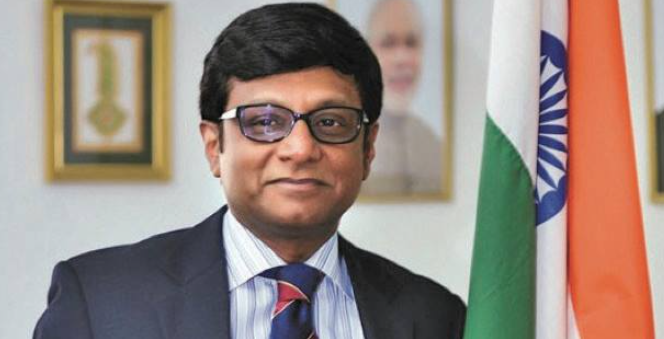
Dr Mohan Kumar
Way back in 1890, Captain Alfred Thayer Mahan, a lecturer in naval history and the president of the United States Naval War College, published The Influence of Sea Power upon History, 1660–1783, a revolutionary analysis of the importance of naval power as a factor in the rise of the British Empire. Mahan argued that British control of the seas, combined with a corresponding decline in the naval strength of its major European rivals, paved the way for Great Britain’s emergence as the world’s dominant military, political, and economic power. Mahan and some leading American politicians believed that these lessons could be applied to U.S. foreign policy, particularly in the quest to expand U.S. markets overseas. The United States of America considers itself a maritime power and more recently, as an Indo-Pacific nation. The concept of Indo-pacific was first enunciated by the late Japanese leader Shinzo Abe in August 2007. In a speech to the Indian Parliament, he said presciently: “We are now at a point at which the Confluence of the Two Seas is coming into being. The Pacific and the Indian Oceans are now bringing about a dynamic coupling as seas of freedom and of prosperity.” Building on the informal cooperation between US, Japan, India and Australia during the Tsunami that hit Asia in 2004, a quadrilateral security dialogue (hereinafter referred to as Quad) was suggested by the late Japanese leader Shinzo Abe in 2007. But by 2008, the initial enthusiasm wore off with both Australia and India at various times expressing reluctance. It took until March 2018 for the Quad to really be institutionalised. Geopolitics was evident when in one of the first reactions to this renewed initiative, the Chinese Foreign Minister then (and now) Wang Yi said it was a “headline grabbing” idea which will “dissipate like sea foam”. Well, the Quad is here to stay and far from dissipating like sea foam has gone from strength to strength, much to the angst of China. More on this later.
———————————-
Dr Mohan Kumar is a former Indian Ambassador to France and presently Dean/Professor at O.P. Jindal Global University. Read more
The Araku story
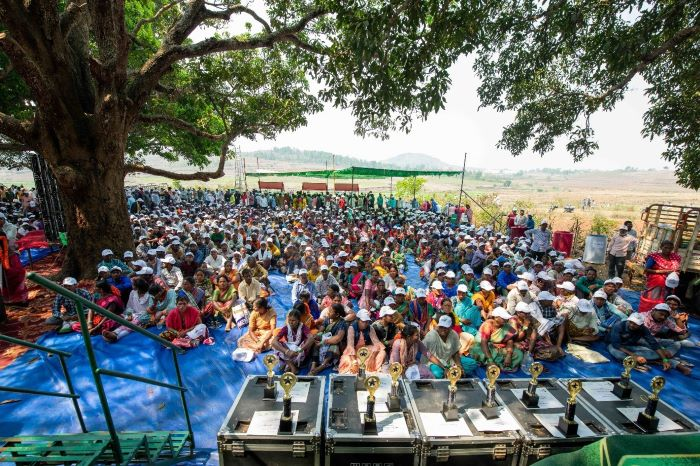
By Rohini Mukherjee
The opening of Araku café in Paris in 2017, marked India’s arrival on the world map of specialty coffee. It was the tribal farmers of Araku Valley, a rich biodiverse region on the borders of Andhra Pradesh and Odisha that have placed India there. The story of Araku Coffee dates back to the year 2000, when the Naandi Foundation started interacting with the local community there. Conscious of the unique cultural and historical heritage of adivasi (tribal) communities, Naandi Foundation focused on developing a deeper understanding of their culture and the environment they lived in. The tribal farmers who had been relying on the traditional shifting cultivation were slowly introduced to regenerative agriculture practices. By 2005, these farmers had started working with Naandi Foundation on growing and improving the quality of their coffee crops. Coffee plantation not only provides better income but also helps in afforestation since it is grown under shade. It provides round the year employment to the local inhabitants and their family members.
The entire valley witnessed a turn around in a short span of 10-15 years. Now it boasts of the world’s largest tribal organic coffee farmers’ cooperative, massive annual forest festivals resulting in the planting of 49 million trees, a world-class organic coffee brand with a flagship store in Paris and exports to more than 12 countries. The tribal farmers and their families are now in the coffee and pepper business, some have their own orchards; they are also growing paddy, pulses and millets using organic regenerative agriculture and are living testimony to the efficacy of a model that ensures economic and ecological security. Araku stands as a testimony to the power of democratic participation in the form of the tribal farmers’ cooperative, which now boasts a 40,000+ membership, regularly conducts democratic elections, and has a current executive body with 50% women.
This is an India Rise story, an Atma Nirbhar Bharat story. Read more
Services Centres Authority (IFSCA), GIFT City Read more
Gift City: Emerging as a preferred new age global financial center
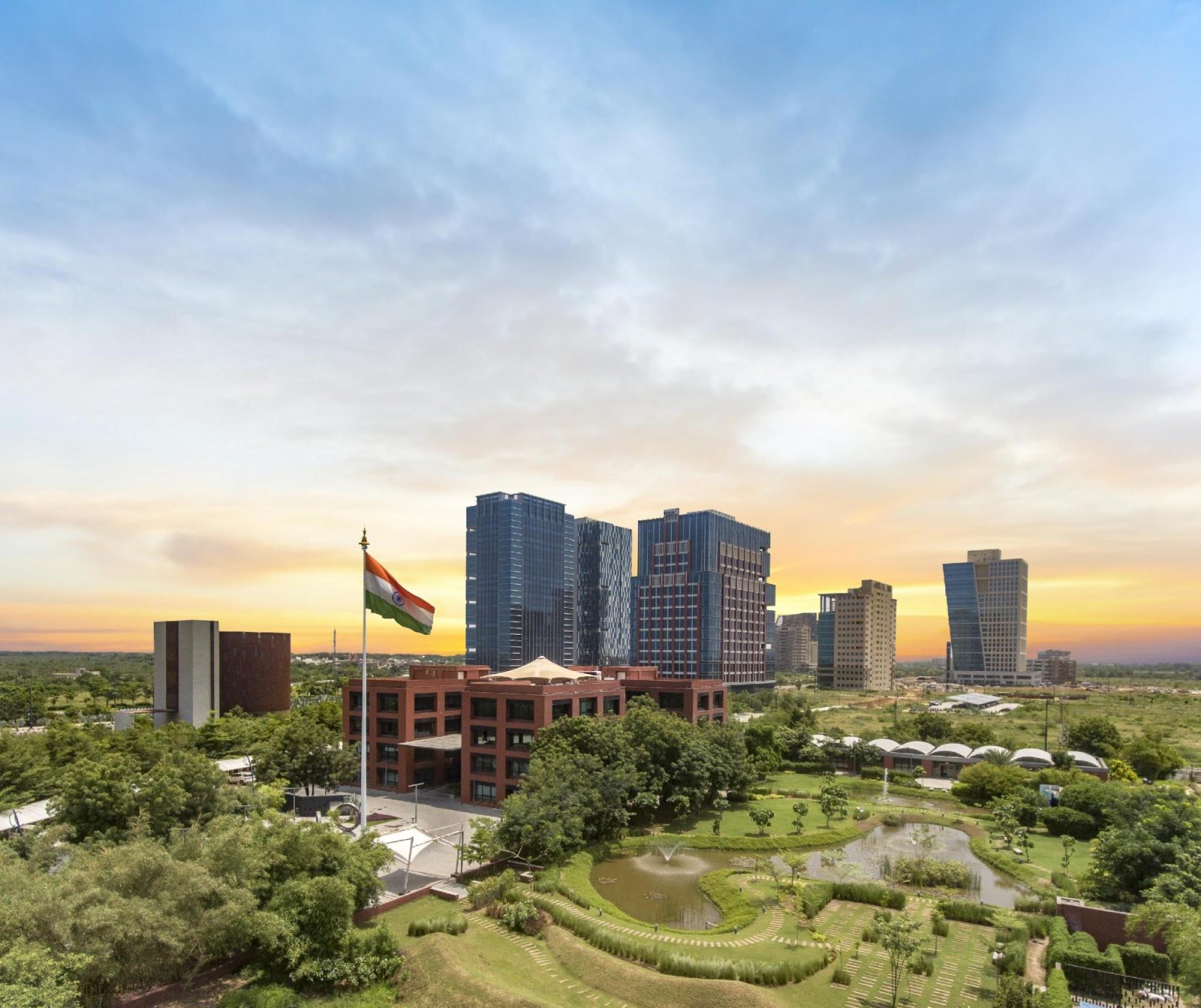
By Dr Dipesh Shah
The Government of India implemented a major financial sector reform by establishing the country’s maiden International Financial Services Centre (IFSC) in GIFT City, Gujarat. The IFSC has been developed as a unique international financial jurisdiction within onshore India, which has been designated as a non-resident zone under the Foreign Exchange Management (FEM) Act. This special status enables financial transactions to be carried out in any of the notified fifteen foreign currencies, including USD, GBP, Euro and Yen.
The IFSC has been set up with two primary objectives namely:
a) Onshoring India-centric international financial services business, and,
b) Serve as a preferred gateway for channelising global capital flows into and out of the country.
Over the last few years, GIFT IFSC has made remarkable progress in positioning itself as a ‘New Age Global Financial Centre,’ providing an ideal platform for the global financial services industry to integrate more efficiently with the Indian economy. A key landmark in IFSC’s journey so far has been the establishment of the International Financial Services Centres Authority (IFSCA) as a unified statutory body for the development and regulation of IFSCs in India. Since October 2020, IFSCA has assumed its statutory powers and has notified over 29 regulations and more than 14 frameworks encompassing the entire spectrum of financial services, including - banking, capital markets, insurance, the fund industry, fintech, aircraft leasing, ship leasing, and global corporate treasury centers. The Government endeavours to develop GIFT IFSC as an internationally recognised financial centre with trusted business regulations, competitive tax regime and ease of doing business.
_________________________________________________________
Dr. Dipesh Shah is Executive Director (Development) at International Financial Services Centres Authority (IFSCA), GIFT City Read more
India and Reformed Multilateralism
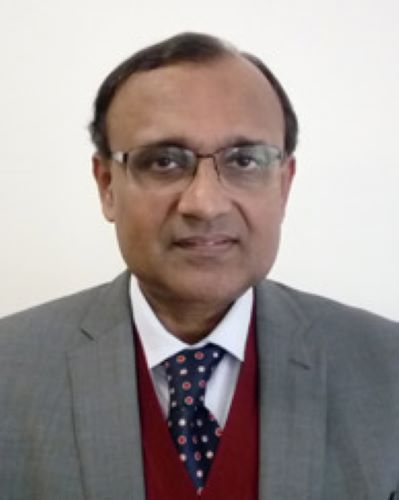
Amb. T S Tirumurti-
Multilateralism is in crisis. With every turn of events, multilateral systems and international organisations are being debilitated almost always at the cost of the Global South. The United Nations stands paralysed. Even as, on the one hand, international laws and agreements are adopted to strengthen the rules-based international order, on the other hand, these are being violated with impunity without accountability. But the problem is much deeper. Majority of developing countries have become bystanders in the unravelling of the world order. Their only insurance i.e. universal participation in decision-making, is vanishing. Instead, they are being presented with two differing, even opposing, world views which they have been asked to subscribe to. Almost all current problems, whether in the UN, WTO, IMF or the World Bank, can be traced back to the inability of the multilateral system to accommodate the new and emerging powers in the post-World War 2 architecture. Multilateralism is caught between those who fight to preserve the status-quo of 1945 and those who demand reform to reflect current realities which is more multipolar. India has been the biggest votary of strengthening multilateralism over the years. But, in a changed world, if the most populous country and the fifth largest economy, with a track record of multilateralism, democracy and a civilizational ethos of humanity, cannot be given its due in global governance, then there is need for reform. In fact, it was at the 10th annual summit of the BRICS in 2018 in Johannesburg, South Africa, that Prime Minister Modi proposed for the first time his vision of “reformed multilateralism” to give major emerging powers a voice in global governance.
________________________________________
Ambassador (Retd.) T.S. Tirumurti is a former Indian Ambassador and presently Professor at IIT Madras Read more
Nalanda-The Earliest-known University

At the ancient University of Nalanda, there was a spirit of vibrant intellectual thought and a climate of discussion and debate. The many ‘acharyas’, or learned professors at Nalanda, authored hundreds of works on philosophy, metaphysics, psychology, logic, medicine, astrology, arts, literature and other subjects.
The study at Nalanda was about life itself and what reality is. It was based not upon faith but on unshakable logic and pursuit of the truth. The study was of our minds, our perceptions, and what knowledge is. The intellectuals here analyzed the qualities that led to Enlightenment through knowledge and sought to create a logical path that could lead us to true and lasting awareness – A path which would work for all.
This was the first known great University in the world. Nalanda was also at the apex of a consortium of universities that had developed in ancient and early medieval times in South and SouthEast Asia. It was from these ancient universities that concepts of rigorous and logical study finally spread to other parts of the world, leading to the founding of universities in Europe. The consortium of universities with Nalanda at its apex included Vikramshila, Odantapuri, Soma Vihara Paharpur, Sumatra Indonesia, Takshashila, and Palkh (now in Afghanistan). Nalanda was the earliest-known university in the world, and it was the first consortium. It is quite amazing to see that such study and sharing of universal knowledge took place in the First Millennium.
The Government of India is making a notable effort to revive the real legacy of Nalanda so that people can see the value of this tradition and how it enriches the tapestry of global knowledge. What is more, the comparative study of the Nalanda tradition and modern science can definitely uplift our civilization. This ancient tradition is a science of life which can help us so much.
Nalanda in the 21st century
The honourable Prime Minister of India inaugurated the new campus of Nalanda University, an international university, close to the site of the ancient ruins of Nalanda, in Bihar, on 19 June 2024.
The modern Nalanda University was established as an “international institution for the pursuit of intellectual, philosophical, historical and spiritual studies”. The impetus to setting up this institution came under the leadership of Hon. Prime Minister Shri Narendra Modi when a major push was given from 2014 onwards to establish the University as an international centre of learning and scholarship, reminding the world of the 21st century of the eminence of ancient Nalanda.
This international University, apart from India, has the participation of 17 other nations: Australia, Bangladesh, Bhutan, Brunei Darussalam, Cambodia, China, Indonesia, Laos, Mauritius, Myanmar, New Zealand, Portugal, Singapore, South Korea, Sri Lanka, Thailand and Vietnam.
The University has 137 scholarships for international students. It offers postgraduate and Doctoral research courses and short-term certificate courses. It has six schools: the School of Buddhist Studies, Philosophy & Comparative Religions; the School of Historical Studies; the School of Ecology and Environmental Studies; the School of Sustainable Development and Management; the School of Languages and Literature; and the School of International Relations and Peace Studies which is yet to commence.
A Library with a capacity to hold 300,000 Books and serve up to 3,000 users is scheduled to be completed by September 2024. This would be in keeping with the glorious tradition of the original Nalanda University. Read more
The Global South and the Summit of the Future
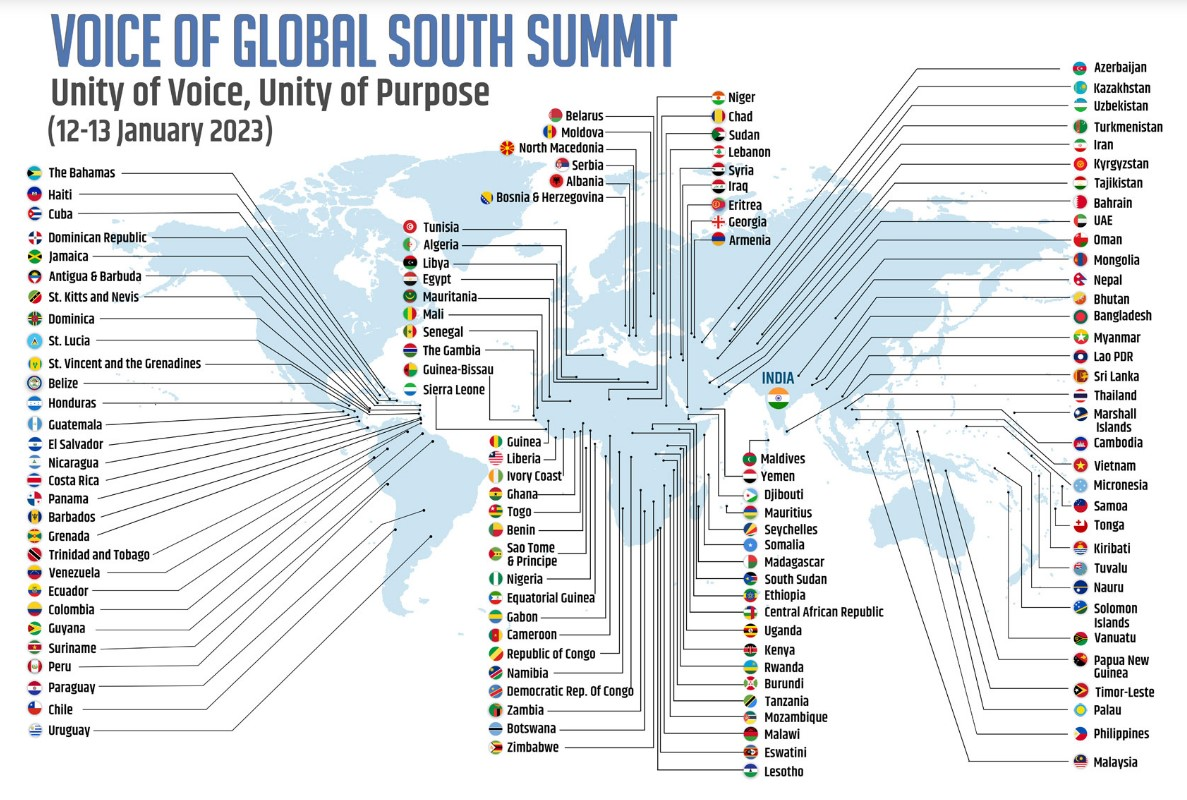
The United Nations General Assembly (UNGA) is scheduled to convene for a “Summit of the Future” in New York on 22-23 September 2024. The outcome of this meeting of world leaders will be the adoption of a “Pact for the Future”. During the past year, the details of the Pact have been discussed among the 193 UN member-states under the co-facilitation of Germany (representing the developed countries of the North) and Namibia (representing the developing countries of the South). The objective of the Pact is “to safeguard the future for present and coming generations”.
India’s approach towards the UN’s Summit of the Future was articulated by Indian External Affairs Minister Dr S Jaishankar in 2023. He emphasized the need to demonstrate “genuine solidarity” to generate “real trust” and integrate the “sentiment of the Global South” in preparing for the Summit. During the discussions in the UNGA in May 2024, India cautioned that if these essential elements were missing from the process, the Summit of the Future would become a “Summit of the Past”, condemning the United Nations “to a perilous vicious cycle of fading into irrelevance.”
The Global South consists of developing country member-states of the UNGA, many of them former colonies of European powers in 1945 who did not negotiate the UN Charter. Their membership of the United Nations began with the historic process of decolonization that began after India’s independence from British colonial rule in August 1947.
The Global South became a majority in the UNGA, propelled by the Decolonization Resolution of December 1960. The first visible expression of solidarity of the Global South in multilateralism was the successful adoption by a two-third majority vote of UNGA resolutions in December 1963 to amend the UN Charter. These amendments resulted in expanding the representation of the Global South in the UN Security Council (UNSC) that controls decisions on peace and security, and the Economic and Social Council (ECOSOC) that controls UNGA decision-making on socio-economic issues.
Since 1960, the process of consolidation and prioritization of Global South priorities has been marked by several negotiating landmarks in multilateral institutions. This was due to the solidarity and sentiment of the Global South, based on trust in the effective and equitable functioning of the interlinked post-war multilateral system.
Among the Global South’s achievements have been the creation of the non-aligned movement in September 1961 which today brings together 120 member-states in the UNGA; the establishment of the Group of 77 (or G-77) in 1964 which today represents 134 out of 193 member-states in the UNGA; the creation of the UN Development Programme (UNDP) by the UNGA in 1965; the adoption of the G-77 Charter of Algiers in 1967 calling for a New International Economic Order; the Decision on Differential and More Preferable Treatment (also known as the Enabling Clause) for developing countries in the GATT (precursor of the World Trade Organization) in 1979; the UNGA Declaration on the Right to Development (DRTD) as an inalienable human right in 1986; and the Common but Differentiated Responsibility (CBDR) provision of international law, codified by the UN Conference on Environment and Development in 1992.
Through patient and forward-looking negotiations in the UNGA between 1960-2015, the Global South/G-77 has succeeded in bringing “development” into the mainstream of multilateralism. The unanimous adoption of Agenda 2030 by the UNGA in September 2015, with its 17 Sustainable Developmental Goals (SDGs) is an acknowledgement of this fact. Agenda 2030 converges the common interests of the Global North and Global South into an integrated human-centric framework, in which peace, security, and development are interlinked. This is the sentiment that the Global South seeks to integrate into the vision of the Summit of the Future.
The UN’s SDG Summit in 2023 held to assess the implementation of Agenda 2030 warned that “numerous crises” since 2015 were derailing this vision. Three broad trends may be seen as contributing to these crises. Read more
Indian Neighbourhood First Policy
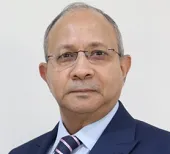
By Pankaj Saran
India’s Neighbourhood First Policy is a reflection of the truism that neighbours are a primary foreign policy priority for any country.
India has historically committed its largest and best resources to its neighbourhood, be it economic, political or diplomatic. Today, India’s Neighbourhood First Policy is the foundation of its global outreach.
Within the country, the Policy has helped to raise awareness about the importance of the neighbourhood, above all in the Government of India. Given the diverse nature of the country and cross-border linkages rooted in history and culture, the Policy is paying dividends by promoting regional integration and advancing peace and stability.
Narendra Modi’s gesture
The decision by Indian Prime Minister Narendra Modi to invite the Heads of all neighbouring countries for his swearing-in ceremony on three successive occasions in 2014, 2019 and 2024 was unprecedented and represented an altogether new way of engaging with neighbours. The presence of the Leaders was a celebration of a common sub-continental identity. It was also a celebration of democracy.
India, by virtue of its size and resource endowments, is the partner of choice for its neighbours. India’s aid programmes amounting to billions of dollars at highly concessional terms extend to all walks of life and all sectors. These range from hard infrastructure to skilling and education to disaster preparedness. They have impacted millions of beneficiaries and transformed the remotest regions in a sustained manner. Over time, the Neighbourhood First Policy has evolved into a well-knit and integrated system.
Vasudhaiva Kutumbakam
The Policy is rooted in the philosophy of Vasudhaiva Kutumbakam (The World is One Family) and the policy of Sabka Saath, Sabka Vikas, Sabka Vishwas (The Welfare and Happiness of Humanity should always be assured). It thereby embodies the principles of universality, equity and fairness. Apart from development, regional integration is a key objective. This is achieved by putting in place asymmetric and resilient connectivities involving people-to-people movement, air, rail, road links, energy pipelines and supply and value chains. Neighbours are given the first right of access to the Indian market, Indian educational institutions and Indian medical facilities.
The growth of the Indian economy serves as the engine of regional growth. It commits India to share its economic successes and enable neighbours to benefit from economies of scale.
The Neighbourhood Policy is the embodiment of the principle of ‘prosper thy neighbour’. The record shows that the economic performance of those who have moved faster with integration has been better than others. Conversely, those countries who have integrated more with India have better withstood external shocks.
Prosper thy neighbour
India has come to the aid of its neighbours in times of difficulty such as during the Covid crisis, the energy and food price shocks after the Ukraine conflict, or even in times of natural disasters. Notable examples in the recent past include the provision of urgent humanitarian aid to Afghanistan, the economic bailout of Sri Lanka, the supply of vaccines and essential commodities to Bangladesh and budgetary support to the Maldives immediately after the pandemic. India is thus not only a first responder but also a safety net for its neighbours.
The Policy is characterised by country-specific targeted interventions rather than a one-size-fits-all approach. Focus on building mutually beneficial bilateral partnerships lies at the heart of the Policy. Where necessary, mechanisms have been put in place to promote sub-regional cooperation. A sub-regional power grid is taking shape between Nepal, Bhutan and Bangladesh passing through Indian territory.
It is recognized that peace and security are indispensable conditions for progress. The Policy is geared to be sensitive to and respect each other’s sovereignty and security concerns. The philosophy is that security is mutual and not a zero-sum game, whether it relates to terrorism or climate change. Capacity building is a key means to achieving security for all.
In recent years, the vision of the neighbourhood has extended to regions beyond the sub-continent. These include the Indian Ocean Region, West Asia and the Gulf States, Central Asia and East Asia. These regions are given priority in the allocation of resources and attention to rebuild the linkages that existed in the pre-colonial era and to shape new ones. India’s influence and imprint in this wider geography is growing rapidly. Read more
India and Africa – Relations in the Past and Present
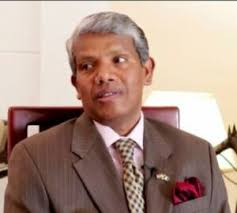
By Ambassador A R Ghanshyam
1. Relations between India and Africa go back to ancient times of the Indus Valley civilization (3300 to 1300 BC).Egyptians (3150 BCE to 30 BCE) and the kingdom of Aksum (100 CE to 940 CE) have had trade relations with ancient India.
2. In recent times, India was one of the earliest colonies to be freed from the British Empire. After independence, Indian leaders spearheaded the long struggle for decolonisation of Africa at the United Nations which elder Africans recollect with nostalgia. British authorities took many skilled Indians to their African colonies because of the advantage of language as well as skills. In several English speaking African countries, the contribution of Indian doctors and teachers is widely recognised.
3. After presenting my credentials on March 05, 2014 when I sat down for an informal chat with then President of Nigeria HE Mr. Goodluck Ebele Jonathan I distinctly recall his words, “You know Ambassador, an entire generation of Nigerians were taught by Indian teachers, treated by Indian doctors and grew up wearing Indian apparel and watching Indian movies. Wherever you go in my country you will find that your country has enormous goodwill.” That was very much evident when I travelled across the country during my tenure as High Commissioner. At that time Nigeria accounted for a quarter of the GDP of Africa and close to a fifth of the continent’s population. Then as well as now, Nigeria was the largest trading partner of India in Africa with bilateral trade close to US$ 20 billion till the Ukraine war. However, thanks to concessional oil supplies from Russia, African suppliers may have lost out in the short run. There would be many African co
4. A very sought-after Indian initiative in Africa is the Indian Technical and Economic Cooperation Programme which began in Septemberuntries with whom we would have similar close relations.
1964. Mid-career training is provided to civil servants, new entrepreneurs and experts through short term courses that range from a few weeks to several months. The Ministry of External Affairs states on its website, www.itecgoi.in that more than 225,000 participants from 160 countries have been trained under this programme since its inception, a significant number from Africa. ITEC is very popular in Africa because the training imparted has been found extremely useful and is greatly appreciated by one and all in Africa.
5. The head of an Angolan Banking Training Institute came to my office in Luanda, in the summer of 2008 when I was Ambassador to Angola. He mentioned that the Indian ITEC course on Environmental Auditing is essential for Angola and he barely gets one or two seats a year for his officers which is grossly insufficient. He enquired if he could send about 50 officers to India to attend this course. He had many who spoke good Portuguese but limited English and that was a constraint. I thought for a while and suggested to the visitor that if Government of Angola can provide an appropriate classroom, local accommodation and transport for our Professors and also local interpreters for English to Portuguese translation, I would discuss the proposal with authorities in India to bring the faculty from India to Angola for the month-long course. He was pleased no end and immediately agreed. It was not difficult to persuade GoI on the proposal thanks to the huge savings it generated and the tremendous goodwill it earned for us. About 50 people, many of whom had limited knowledge of English were thus trained by Indian professors for five weeks. Such innovations can be undertaken by our Envoys in other countries too which would save us huge costs, train a much larger number of trainees and trainers and also earn enormous goodwill.
6. In his inaugural address dated June 14, 2023 to the 18th CII-EXIM BANK Africa Conclave in New Delhi, External Affairs Minister Dr S Jaishankar informed the audience that (i) India has extended concessional loans of over US$ 12.37 billion under which 197 projects had been completed (now 206 projects in 43 countries), 65 were under execution and 81 at the pre-execution stage. Among the projects are drinking water schemes, irrigation, rural solar electrification, power plants and transmission lines to cement, sugar & textile factories, technology parks and railway infrastructure. (ii) During COVID-19, India provided medical support to 32 African countries and ‘Made in India’ COVID vaccines to 42 African countries. We now encourage Indian Pharma manufacturers and vaccine producers to explore joint manufacturing facilities in African countries. (iii) India provided 42,000 scholarships since the India Africa Forum Summit (IAFS) –III in 2015 in New Delhi. It is a matter of pride for India that several high ranking leaders, ministers and officials from Africa have studied in Indian universities. Apart from these, a large number of students and officials from Africa have also trained under the ITEC program. (iv) Under the second phases of e-VidyaBharti and e-ArogyaBharti networks launched in 2019 for tele-education and tele-medicine, over 14,000 youth from 22 African countries have enrolled for various degrees and diploma courses. Read more










